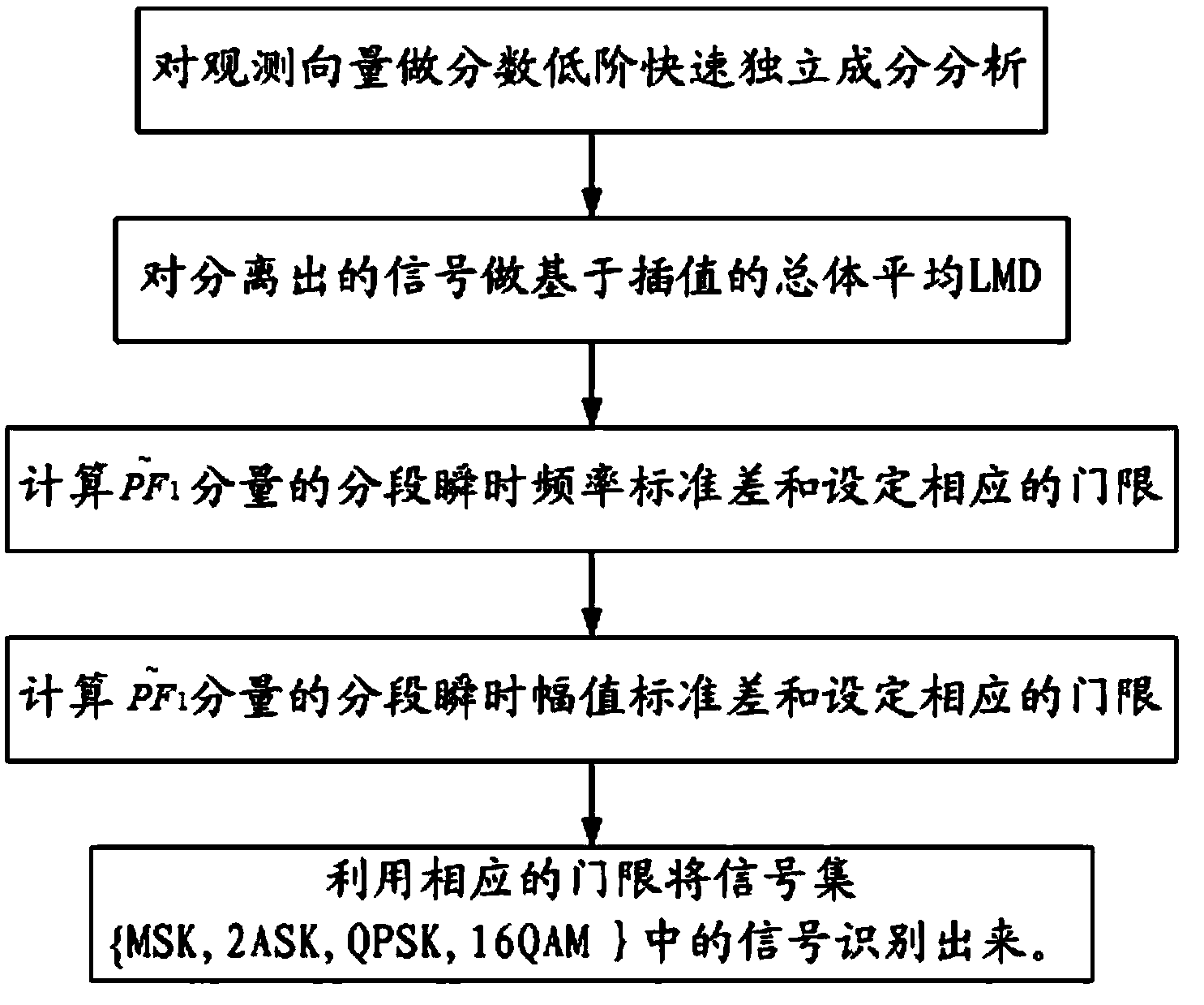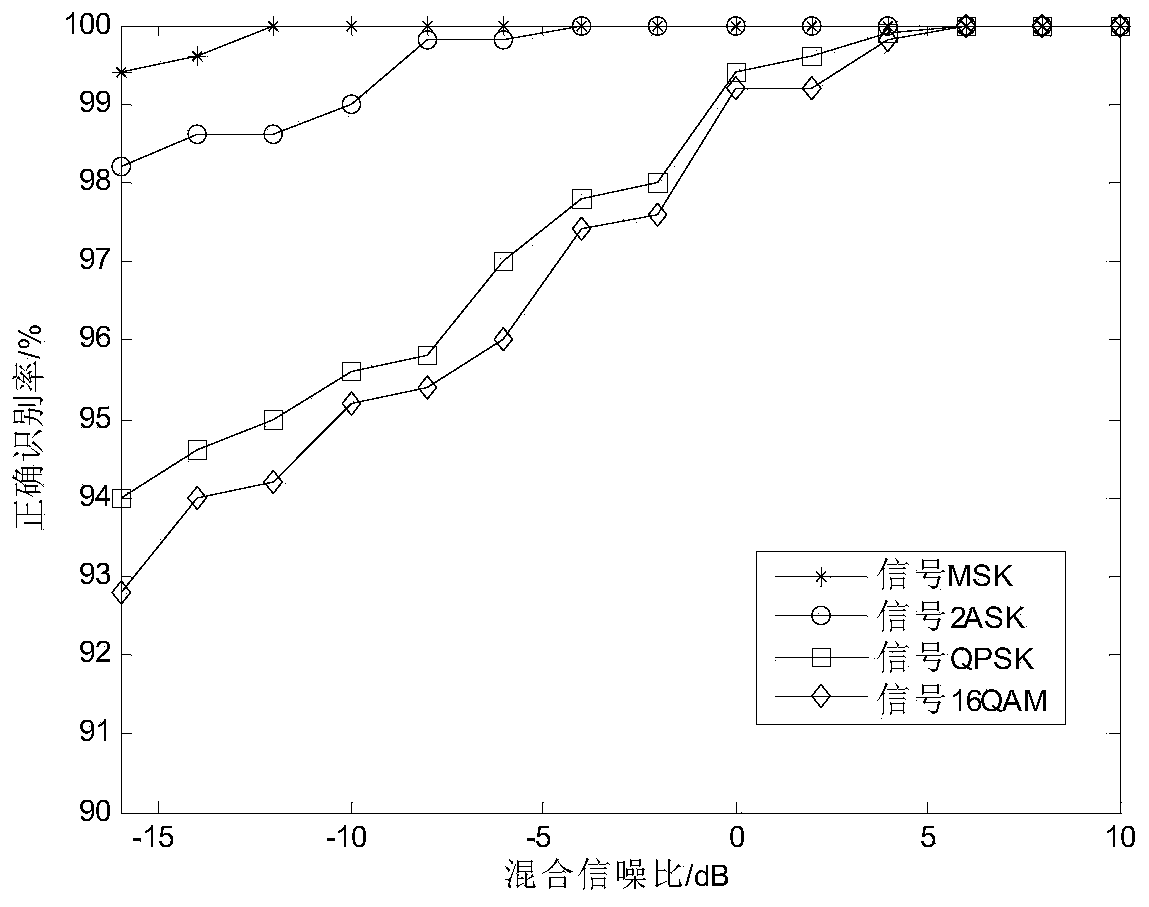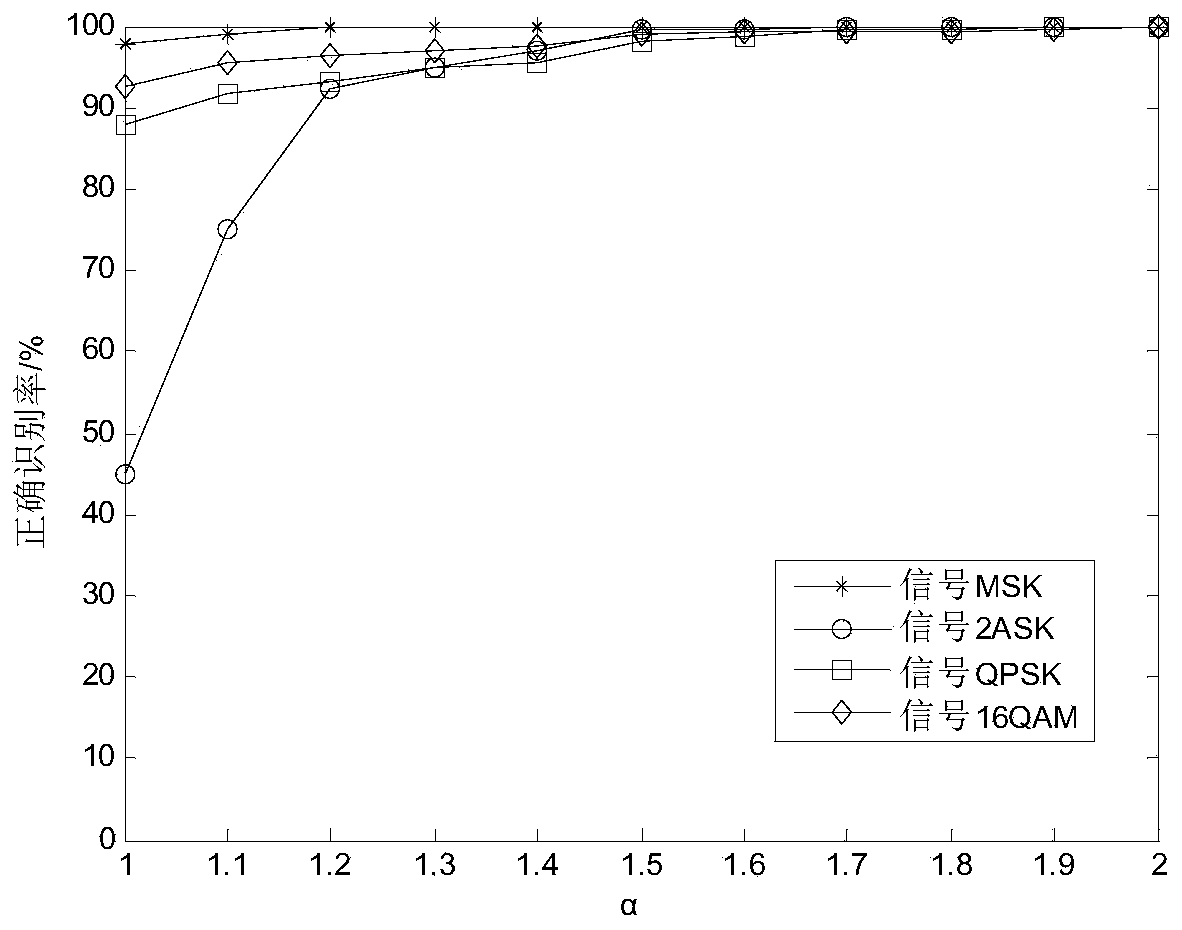Method for identifying digital modulation signals in presence of complicated noise
A technology of digital modulation signal and identification method, which is applied in the field of communication and can solve the problems of unsatisfactory identification performance and poor QPSK identification performance.
- Summary
- Abstract
- Description
- Claims
- Application Information
AI Technical Summary
Problems solved by technology
Method used
Image
Examples
Embodiment Construction
[0096] Concrete implementation steps of the present invention are as follows:
[0097] Such as figure 1 As shown, the present invention is a method for identifying digitally modulated signals under complex noise, the method comprising the following steps:
[0098] S1 performs fractional low-order fast independent component analysis on the observation vector x of the received signal, and separates the received signal into the transmitted signal and Alpha stable distributed noise;
[0099] It should be noted that the fractional low-order fast independent component analysis of the observation vector x of the received signal is performed as follows:
[0100] 1) Center the observation vector x minus the mean value, and use principal component analysis to perform fractional low-order pre-whitening processing on the centered observation vector to obtain a whitening matrix v, where the fractional low-order correlation matrix used in PCA is defined as for
[0101] ...
PUM
 Login to View More
Login to View More Abstract
Description
Claims
Application Information
 Login to View More
Login to View More - R&D
- Intellectual Property
- Life Sciences
- Materials
- Tech Scout
- Unparalleled Data Quality
- Higher Quality Content
- 60% Fewer Hallucinations
Browse by: Latest US Patents, China's latest patents, Technical Efficacy Thesaurus, Application Domain, Technology Topic, Popular Technical Reports.
© 2025 PatSnap. All rights reserved.Legal|Privacy policy|Modern Slavery Act Transparency Statement|Sitemap|About US| Contact US: help@patsnap.com



